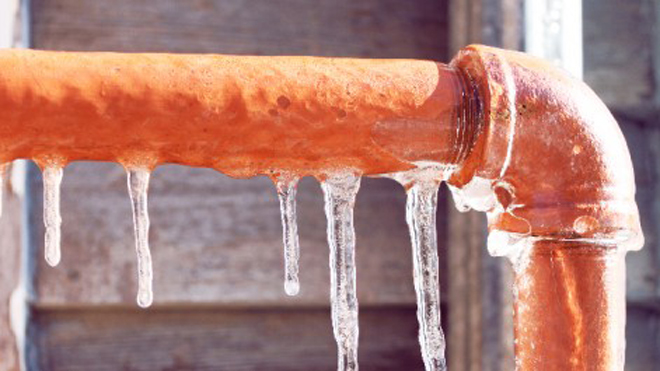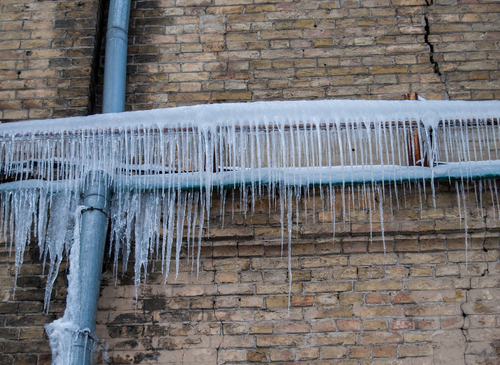Preventing Frozen Pipes in Cold Weather: Key Tips
Preventing Frozen Pipes in Cold Weather: Key Tips
Blog Article
We've found this article relating to Helpful Tips to Prevent Frozen Pipes this Winter directly below on the internet and thought it made perfect sense to quickly share it with you on my blog.

Cold weather can damage your plumbing, particularly by freezing pipes. Here's just how to avoid it from taking place and what to do if it does.
Introduction
As temperatures decline, the risk of icy pipelines boosts, potentially leading to pricey repair work and water damage. Understanding just how to stop frozen pipelines is crucial for home owners in chilly climates.
Avoidance Tips
Insulating prone pipes
Cover pipes in insulation sleeves or make use of heat tape to secure them from freezing temperatures. Concentrate on pipes in unheated or external locations of the home.
Home heating techniques
Maintain interior areas sufficiently warmed, specifically locations with pipes. Open up cabinet doors to permit cozy air to flow around pipelines under sinks.
How to identify icy pipelines
Search for lowered water circulation from taps, unusual odors or noises from pipes, and visible frost on exposed pipes.
Long-Term Solutions
Structural modifications
Take into consideration rerouting pipelines away from exterior walls or unheated areas. Include added insulation to attic rooms, cellars, and crawl spaces.
Updating insulation
Purchase high-grade insulation for pipelines, attics, and walls. Correct insulation assists maintain regular temperature levels and reduces the danger of frozen pipes.
Shielding Outdoor Pipes
Garden hoses and outside faucets
Disconnect and drain garden hose pipes prior to winter months. Mount frost-proof spigots or cover outdoor faucets with insulated caps.
Recognizing Frozen Pipelines
What causes pipes to freeze?
Pipes freeze when exposed to temperatures below 32 ° F (0 ° C) for expanded periods. As water inside the pipes freezes, it increases, taxing the pipe walls and potentially triggering them to break.
Threats and damages
Frozen pipes can result in water disturbances, residential property damages, and pricey fixings. Burst pipes can flooding homes and create considerable architectural damages.
Indications of Frozen Pipeline
Identifying icy pipes early can prevent them from bursting.
What to Do If Your Pipelines Freeze
Immediate activities to take
If you suspect icy pipes, keep taps open to soothe pressure as the ice thaws. Utilize a hairdryer or towels soaked in warm water to thaw pipes gradually.
Conclusion
Protecting against frozen pipelines requires positive actions and quick responses. By comprehending the causes, signs, and preventive measures, homeowners can safeguard their pipes during cold weather.
Helpful Tips to Prevent Frozen Pipes this Winter
UNDERSTANDING THE BASICS: WHY PIPES FREEZE AND WHY IT’S A PROBLEM
Water freezing inside pipes is common during the winter months, but understanding why pipes freeze, and the potential problems it can cause is crucial in preventing such incidents. This section will delve into the basics of why pipes freeze and the associated problems that may arise.
THE SCIENCE BEHIND FROZEN PIPES
When water reaches freezing temperatures, it undergoes a physical transformation and solidifies into ice. This expansion of water as it freezes is the primary reason pipes can burst. As the water inside the pipe freezes, it expands, creating immense pressure on the walls. If the pressure becomes too great, the pipe can crack or rupture, leading to leaks and water damage.
FACTORS THAT CONTRIBUTE TO PIPE FREEZING
Low Temperatures: Extremely cold weather, especially below freezing, increases the risk of pipes freezing. Uninsulated or Poorly Insulated Pipes: Pipes located in unheated areas, such as basements, crawl spaces, or attics, are more prone to freezing. Insufficient insulation or lack of insulation altogether exacerbates the problem. Exterior Wall Exposure: Pipes running along exterior walls are susceptible to freezing as they encounter colder temperatures outside. Lack of Heating or Temperature Regulation: Inadequate heating or inconsistent temperature control in your home can contribute to frozen pipes. PROBLEMS CAUSED BY FROZEN PIPES
- Pipe Bursting: As mentioned earlier, the expansion of water as it freezes can cause pipes to burst, resulting in significant water damage.
- Water Damage: When pipes burst, it can lead to flooding and water damage to your property, including walls, ceilings, flooring, and personal belongings.
- Structural Damage: Prolonged exposure to water from burst pipes can compromise the structural integrity of your home, leading to costly repairs.
- Mold and Mildew Growth: Excess moisture from water damage can create a favorable environment for mold and mildew growth, posing health risks to occupants.
- Disrupted Water Supply: Frozen pipes can also result in a complete or partial loss of water supply until the issue is resolved.
WHY CERTAIN PIPES ARE MORE PRONE TO FREEZING
- Location: Pipes located in unheated or poorly insulated areas, such as basements, crawl spaces, attics, or exterior walls, are at higher risk of freezing.
- Exterior Pipes: Outdoor pipes, such as those used for irrigation or exposed plumbing, are particularly vulnerable to freezing as they are directly exposed to the elements.
- Supply Lines: Pipes that carry water from the main water supply into your home, including the main water line, are critical to protect as freezing in these lines can affect your entire plumbing system.
- Underground Pipes: Pipes buried underground, such as those connected to sprinkler systems or outdoor faucets, can be susceptible to freezing if not properly insulated.
https://busybusy.com/blog/helpful-tips-to-prevent-frozen-pipes-this-winter/

As a passionate reader about Winter Plumbing Precautions: Preventing Frozen Pipes, I assumed sharing that piece of content was beneficial. Make sure you take the time to promote this blog post if you appreciated it. We treasure your readership.
Click Here Report this page